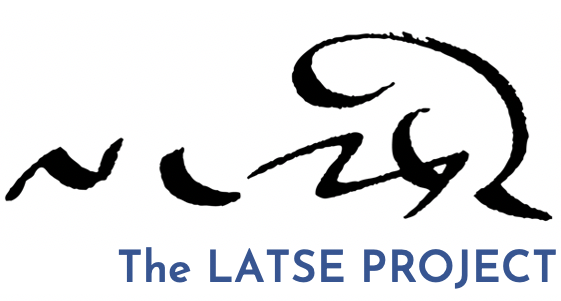GENDUN CHOPEL CENTENNIAL CONFERENCE: Narkyid Ngawangthondup
Note from the translator: Although Narkyid Ngawangthondup translated his talk into English, the Tibetan version was more thorough. For this reason, I have included his thank you from English, but then translated his talk from Tibetan. Also, note that I skipped the first paragraph of self-deprecatory remarks, which appeared in Tibetan.
[in English] First I would like to extend a “Tashi Delek” and also thank you very much to Pema Bhum la and his Latse Library for inviting me here, and for giving me this opportunity to meet Dorje Gyal and Pema Jam, and others from Tibet, the Bö ki képa (bod kyi mkhas pa / Tibetan scholars). Thank you very much.
[continues in Tibetan]
After I arrived in India I researched and wrote an article about Tibetan sources for the thought of Gendun Chopel. I did not research all of his accomplishments, as many Tibetans both inside and outside Tibet, as well as non-Tibetans, were already interested in and examining his life history, drawings, and so forth.
For this conference, I was asked to speak about the writings of Gendun Chopel. Thus, I will speak about the Gtam rgyud gser gyi thang ma [Grains of Gold], which Gendun Chopel composed and on how I was able to publish it in India. The original of the Gtam rgyud gser kyi thang ma is in traditional Tibetan pecha style and written in cursive script (‘khyug yig). I knew that a friend of mine who had actually met Gendun Chopel owned a copy of it. While my friend was in Dharamsala to meet his Holiness the Dalai Lama in 1980, we talked a lot about what had happened to us both over the years. I promised that if he were to give me his copy, I would publish it in its entirety. He said, “So far, I have managed to keep it hidden, but it would fulfill my wishes if you could publish it. I will certainly send it to you.” The next winter while I was in Bodh Gaya, an old mutual friend of ours who was reliable, had come to India to listen to His Holiness’s teachings; my friend sent his copy of the Gtam rgyud gser kyi thang ma by hand through our friend.
I then left Sarnath in order to visit the Central Institute of Higher Tibetan Studies in Varanasi. I met with the director Samdong (Gzam dong) Rinpoche and asked him to take a look at the text. I asked him if the school would be willing to publish this text, explaining my reasons, that it was related to Sanskrit, etc.; he agreed. Samdong Rinpoche had heard that Gendun Chopel had written a book called Gtam rgyud gser gyi thang ma.
Two days later, Samdong told me that he had decided to publish the Gtam rgyud gser gyi thang ma in modern book format. I was very happy. I thanked him and asked him to please write an introduction to the book, which he accepted. I told him that once the book was published, I would like to give the original copy to the Library of Tibetan Works and Archives (LTWA). Rinpoche agreed that this was appropriate. The book was finally published [in 1986]. I have here a copy that I would like to present to Latse Library. I think this is the first book of Gendun Chopel’s to be published outside of Tibet. I gave the original, which was in cursive, to the LTWA in Dharamsala. That is all I have to say for today. Again, Tashi Delek.
Translated from the Tibetan by Lauren Hartley.
